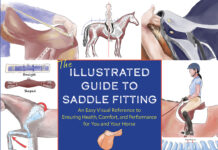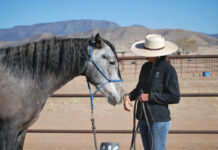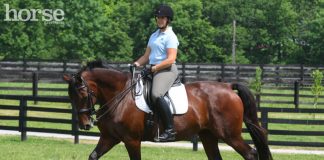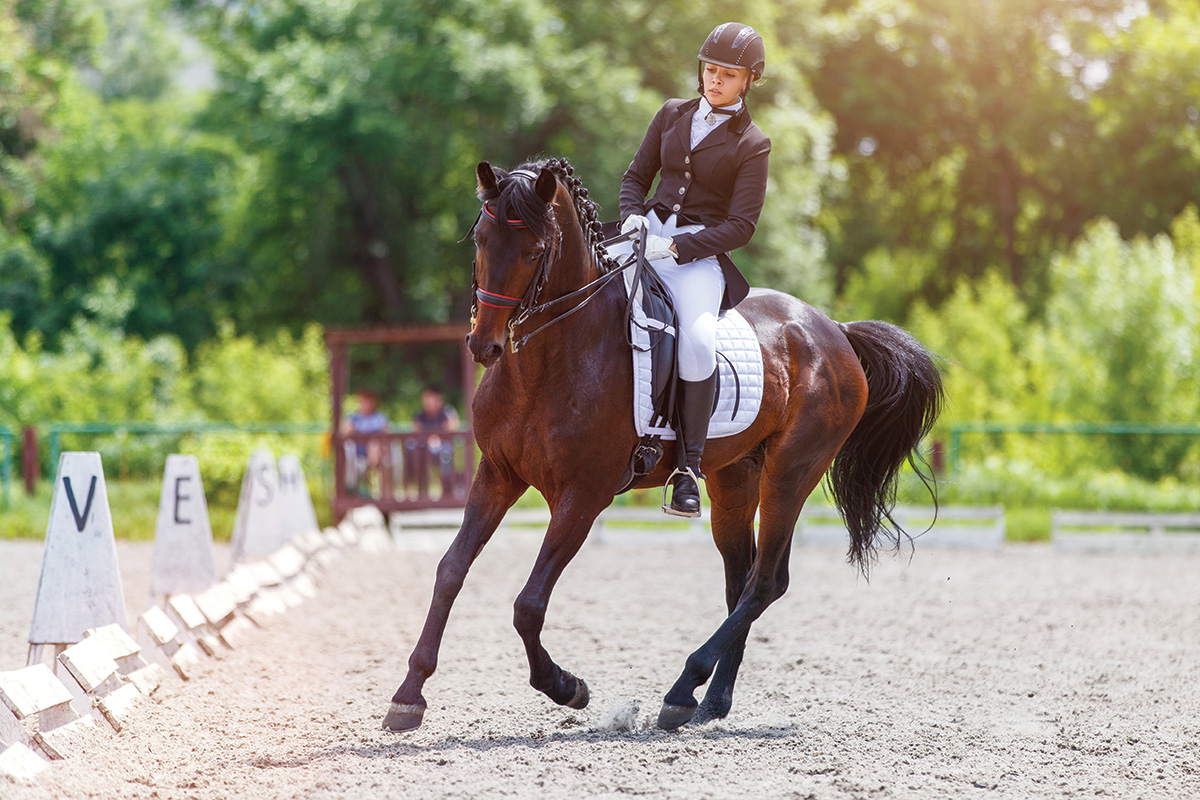
You trot down center line, ride the pattern of your dressage test, and soon receive your score. Your placing in the class depends on how that score stacks up against those of your competitors, but there’s a lot more to the dressage judging process than the score alone.
The Basic Math
Each numbered movement (element) on the dressage test sheet receives a score from zero to 10. Here is the scale of marks and what they mean:
0 Not executed
1 Very bad
2 Bad
3 Fairly bad
4 Insufficient
5 Marginal
6 Satisfactory
7 Fairly good
8 Good
9 Very good
10 Excellent
Judges can also award half-points. A mark of 6.5 would indicate that the movement was a little better than “satisfactory,” but not quite good enough to be “fairly good.”
Certain movements in the tests are considered so important that they have coefficients of 2, meaning that the points for those movements are doubled.
Most dressage final scores are expressed as percentages of the total possible points that a competitor would garner if every movement earned a 10. Therefore if most of your marks are in the 6 range, you’ll wind up with a score of around 60 percent.
How the Judges Judge
Prospective judges undergo rigorous training in order to become licensed to officiate at dressage competitions. Much of that training focuses on instilling a process for evaluating a dressage test so that judges everywhere apply the same standard.
“The first thing I look at is the quality of the gaits,” says U.S. Equestrian “R” dressage judge Anne Moss of Coatesville, Pa. In dressage, the walk, trot, and canter are the underpinning of all training. Quality begins with purity of gaits: a clear, rhythmic four-beat walk, two-beat trot, and three-beat canter.
Some horses are blessed with more natural balance and freedom of movement than others, but training and riding affect the gait assessment for each movement.
“It’s not as if I decide that a horse is an 8 mover for every movement,” Moss explains. “The horse might be an 8 mover for one movement, but for the next movement it turns into a 6, and the next movement it could turn into a 7.”
Additionally, all three gaits are not necessarily of equal inherent quality, and how well the horse executes the individual movements will also move the needle up or down, she says.
You may have heard dressage enthusiasts voice concerns that only big-moving warmbloods can do well in the sport. Moss concedes that a horse purpose-bred for dressage may find it easier biomechanically to meet the demands of the sport. “[However,] I have gotten 7s on gaits on my Quarter Horse, my Thoroughbred, and my warmblood. A lot of it is the quality of training and how you’re presenting the gaits,” Moss says. In fact, the quality of the training is the second most important factor in the judge’s evaluation process.
The question becomes, “Is the training going in the right direction?” Moss is referring to the basics of dressage training, which are the fundamentals of correct gymnastic development (rhythm, suppleness, contact, impulsion, straightness, and collection). For each movement in the test, the judge looks for a demonstration of the basics appropriate to the level being shown (see diagram).
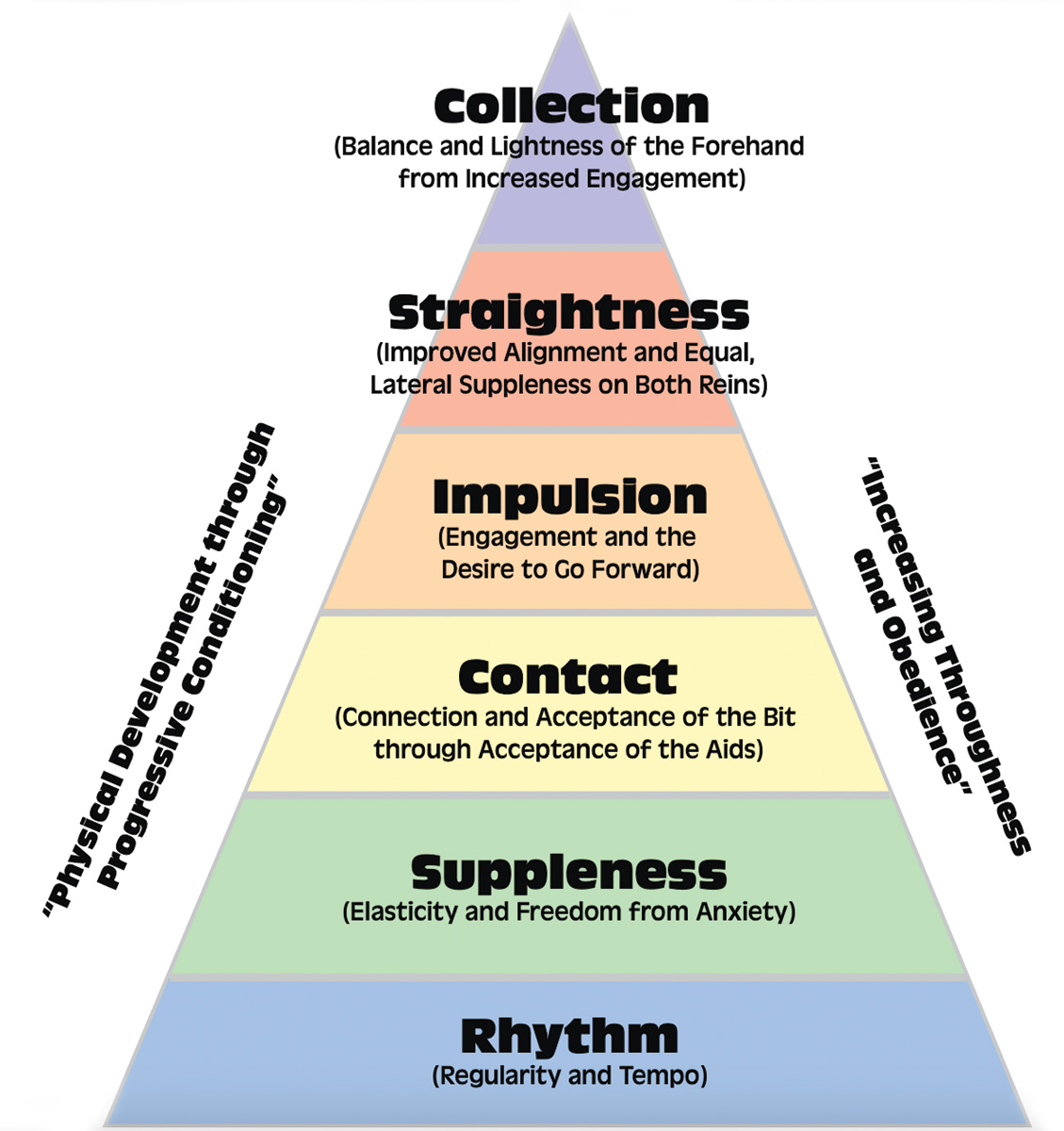
“[Then the judge considers] how well the horse did or didn’t perform the movement, or the transition, or the figure,” Moss says. How the element is executed is known as the essence of the movement.
Finally, modifiers can cause the judge to raise or lower the mark for a movement. If your horse stiffens and becomes momentarily inattentive, that lapse will negatively affect the score, and you may lose half a point or so. On the flip side, things like spot-on accuracy can give the mark for a movement a little boost.
Comments and Collective Marks
Next to each score box on the test sheet is a comments box. A judge will dictate comments to a scribe in real-time while watching a test, often noting the main issue that depressed the mark for that movement. Savvy competitors use the marks and comments to help guide their future training, formulating a plan to address weak points.
Every dressage test sheet concludes with a set of marks and comments written personally by the judge, known as the collective marks. Moss dubs this portion “the overall scorecard.”
The five collective marks—for gaits, impulsion, submission, rider’s position and seat, and rider’s correct and effective use of the aids—serve as a snapshot of the entire test. The fundamentals behind each collective mark are spelled out on every U.S. Equestrian dressage test sheet, which you can find at usef.org.
“[The collectives] tell you whether the training is going in the right direction and give a really concise assessment of how the training was on that day, for that test, in that ring,” Moss says. The judge’s intention is to guide you with a few directions for improving your training.
More Than a Pattern
“Most people just study the pattern of the test,” Moss says. “They don’t think about what the judge is trying to evaluate. I think that’s where the biggest disconnect is between riders and judges. Just riding the pattern is not dressage. Unless the horse is working correctly through his body, it’s not going to be a successful dressage test.”
Fortunately, the test sheets also contain cheat sheets! When you print off your test to begin memorizing it, carefully examine every movement for a list of “directives”—what the judge is looking for.
Example: in a 20-meter trot circle at Training Level, the judge wants to see “regularity and quality of trot; shape and size of circle; bend; balance.”
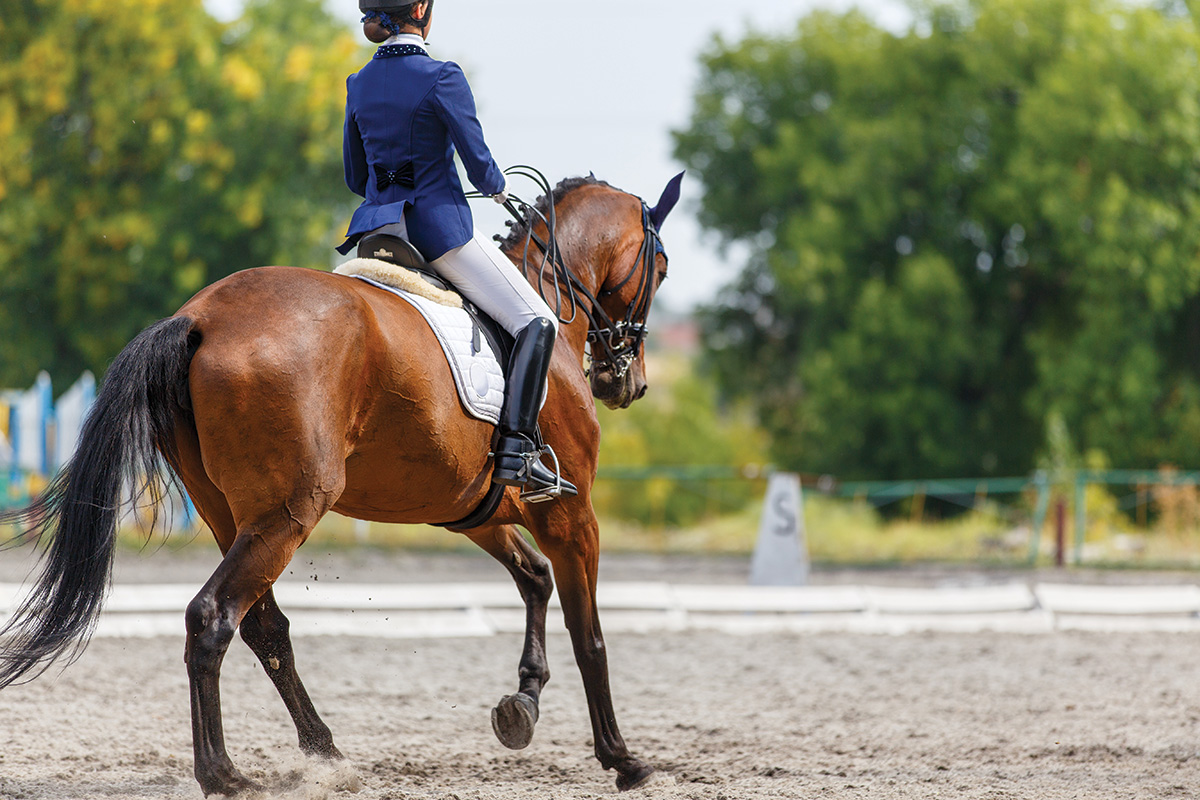
“Most times, the judge is commenting on things that are in the directive box,” Moss says. The other thing that’s printed on every test sheet is a purpose statement. The purpose of Training Level, for instance, is “to confirm that the horse demonstrates correct basics, is supple and moves freely forward in a clear rhythm with a steady tempo, accepting contact with the bit.”
“At the beginning and the end of the test, the judge is thinking about the purpose,” Moss says. “How well did the rider meet the purpose of the level?”
She encourages riders to use the dressage tests as valuable training tools.
“Judges try really hard to give helpful comments that are understandable,” says Moss. “The goal of all judging is to improve the quality of riding and training so that the horse can have a better life, and hopefully progress up the training scale.”
This article about how to improve your dressage score appeared in the June 2022 issue of Horse Illustrated magazine. Click here to subscribe!


